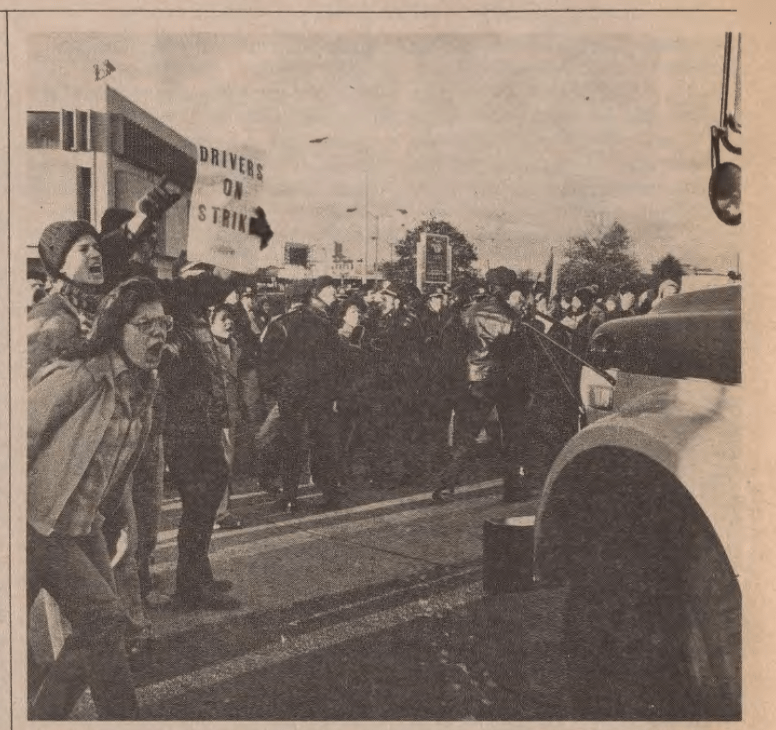BTU Standing in Solidarity is a project inspired by many factors, a few being coincidence. This past year I worked in the University Archives and Special Collections (UASC) while also in Digital Public History. While working in UASC I was inventorying Tess Ewing’s collection which had recently come to UMass Boston. While inventorying it I noticed that it related to what we were talking about in Digital Public History about the Boston Teachers Union (BTU). And then I hit the jackpot, Newsletters from the School Bus Drivers Union, Hazard Lights from 1979-1982 which cover the formation of the Union through the strike. And in those newsletters I found just how often the Boston Teachers Union showed up.
I absolutely loved how these collections interacted and seeing the solidarity between these two unions that were closely aligned. Through a virtual visit with the editors of the Boston Union Teacher I learned about how the BTU is presently supporting other unions, sending food to the Nurses Union, etc. And when perusing the Boston Union Teacher I continued to see the BTU show up for other Unions again and again, either going to support their picket lines, sending money, or regularly publishing ‘Do Not Buy’ lists. Seeing the support in the present and in the past, it made me want to highlight all of the ways that the BTU has continued to show up for other Unions over their long and varied history.
For the digital exhibit I chose to focus on four big strikes in the 1970s to the early 1980s. This decade was one of militant action on the parts of Unions. The BTU even went on strike themselves during this time. And several other Unions nationwide also advocated for change at this time. The BTU paid attention to these nationwide issues, which is why I focused on the United Farmworkers Gallo Grape Boycott and the J.P. Stevens Boycott. Both of these were not local but that did not deter BTU members from supporting these issue. And after looking at these nationwide issues I also wanted to look at more local ones, like the General Electric Strike, which happened just a few hours from Boston. But most notably the School Bus Driver Strike, which affected the everyday lives of the BTU members. And the strike that they were able to support more directly, actually showing up on their picket lines.

To do the research, finding these moments of solidarity, mostly consisted of combing through each issue of the Boston Union Teacher and taking copious notes. While I loved finding these moments of solidarity, I also loved to see what was going on at the time as well. Alongside the militant union action was also the fight for Teacher Aids to enter the union, win a better contract, and for school nurses to advocate for better working conditions.
My favorite resource to use was from Tess Ewing’s collection. Digging through her papers showed a whole other fight, closely aligned with the BTU, advocating for student safety and fair conditions. The Hazard Lights newsletter also shows just how close-knit the School Bus Union is and how hard they worked. Having all of these paper resources to work with influenced the layout of my digital exhibit greatly, knowing that I would not be working with multi-media sources. It led to me incorporate different aspects of these texts, from linking, to screenshots, to putting the entire document on the page.
Overall, this exhibit is meant to highlight the ways that Unions can come together to support one another, but also show the national reach of solidarity. Regardless of how far away, it is possible to continue supporting these strikes, boycotts, and more. And there are many more ways to explore how the BTU continues to stand in solidarity today, if there were much more time this exhibit could run from 1970 all the way through the present, looking at what it looks like to stand in solidarity at different times. On a smaller scale this exhibit is also meant to show that despite the many missteps of the BTU in the past, they are still consistent in standing in solidarity.
